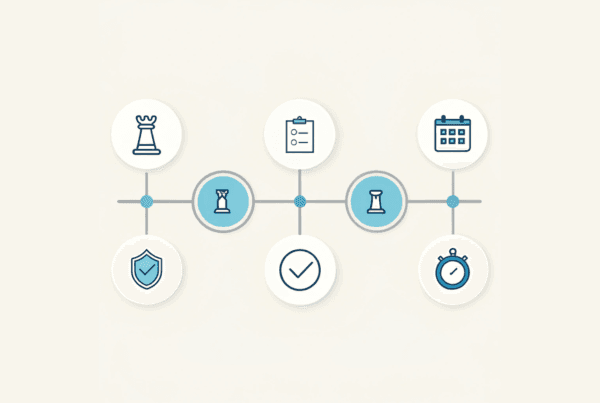
Explore the key private equity deal structures for healthcare practices, including full buyouts, recapitalizations, rollover equity, and MSOs. Learn which option best aligns with your financial and operational goals.
When you begin exploring a partnership with private equity, the conversation quickly moves from the “why” to the “how.” You understand the potential benefits and the market drivers, but what does a transaction actually look like? The answer lies in the deal structure, which dictates everything from your upfront cash payment to your role in the practice’s future.
The structure of a deal is not a minor detail—it is the blueprint for your financial future and professional life post-transaction. As we covered in our main Guide to PE in Healthcare, PE firms use several models to acquire and partner with practices. Here, we will explore those structures in greater detail so you can determine which path aligns with your personal and professional goals.
The Core Choice: Full Buyout vs. Strategic Recapitalization
For a practice owner, the first and most significant decision point is how much of the business you want to sell. This single choice determines whether you are making a clean break or positioning yourself for future growth alongside your new partner. Nearly all deals fall into one of two primary categories.
Full Buyout (100% Sale)
A full buyout is exactly what it sounds like: a 100% sale of your practice’s ownership and control. This is the most traditional form of an exit and is often structured as a leveraged buyout (LBO), where the PE firm uses a combination of its own capital and debt to finance the purchase.
This structure is typically for: Physician-owners who are ready to retire, looking to pursue other ventures, or simply want the maximum amount of immediate, risk-free liquidity. After the sale, your financial interest in the practice’s future performance is gone, as is your responsibility for its management.
Majority Recapitalization (Partial Sale)
A majority recapitalization has become the dominant deal structure in healthcare PE. In this scenario, you sell a controlling stake in your practice—usually 60% to 80%—to the PE firm. You receive a substantial cash payment for the portion you sell, providing significant liquidity to diversify your personal wealth.
The key component is that you “roll over” the remaining 20% to 40% of your ownership into the new, PE-backed company. This is not just a partial sale; it’s the formation of a new partnership.
This structure is typically for: Owners who are not ready to retire and want to continue leading the practice’s clinical operations. It’s for those who believe in the future growth of their practice and want to participate in the financial upside they help create with their new PE partner.
| Feature | Full Buyout | Majority Recapitalization |
|---|---|---|
| Ownership Sold | 100% | 60%–80% |
| Cash at Close | Maximum | Substantial, but less than a full buyout |
| Future Upside | None | Significant, through retained equity |
| Post-Sale Role | Typically transitional or a formal exit | Continued leadership role is common |
| Risk Profile | All future business risk is eliminated | You retain risk tied to your equity |
The ‘Second Bite’: Understanding Seller Rollover Equity
The concept of “rollover equity” is what makes a recapitalization so compelling for many practice owners. This retained stake ensures your incentives are directly aligned with the PE firm’s. Both parties are now focused on the same goal: growing the practice’s value for a future sale, often called the “second bite of the apple.”
Here’s a simplified example of how it works:
- Your practice is valued at $10 million.
- You agree to a recapitalization, selling 70% for $7 million in cash and rolling over 30% ($3 million worth of equity).
- Over the next 3-5 years, you and your PE partner grow the practice by expanding service lines, acquiring other practices, and improving operations.
- The PE firm sells the newly enlarged company for $30 million.
- Your 30% rollover equity stake is now worth $9 million—three times its original value. Your “second bite” is significantly larger than your initial equity.
This structure allows you to de-risk by taking cash off the table today while maintaining the potential for a larger, second liquidity event in the future. It is a powerful tool for wealth creation and a primary reason why many successful owners choose a recapitalization over a full sale. It is also often a key element in maintaining clinical autonomy post-sale, as your role as a significant equity holder gives you a stronger voice.
Bridging the Gap: The Role of Earn-Outs
In some deals, the buyer and seller may disagree on the final valuation. An “earn-out” is a common tool used to bridge this gap. An earn-out is a form of contingent payment you receive post-closing, but only if the practice achieves specific, pre-defined performance targets.
For example, a deal might be structured as $8 million in cash at close plus an earn-out of up to $2 million if the practice hits certain EBITDA (Earnings Before Interest, Taxes, Depreciation, and Amortization) targets over the next two years.
While earn-outs can increase your total payout, you should approach them with caution. Their value is not guaranteed. It is critical that your advisor negotiates terms that are fair and based on achievable goals. You should pay close attention to how the performance metric is defined; a clear understanding of your practice’s financials, especially your EBITDA, is essential.
The Strategic Layer: How MSOs and Platform Strategies Shape Deals
Healthcare transactions have unique legal and strategic layers that influence the final deal structure. Two of the most important concepts to understand are the Management Services Organization (MSO) model and the platform/add-on strategy.
The MSO Structure
In many states, the Corporate Practice of Medicine (CPOM) doctrine prohibits non-physicians from owning a medical practice or employing physicians. To comply with these laws, PE firms use a Management Services Organization structure. In this model:
- The PE firm acquires your practice’s non-clinical assets (real estate, equipment, brand) and places them into an MSO that it owns.
- The physicians in your practice form a new Professional Corporation (PC) that they own, which holds the medical licenses and employs the clinical staff.
- The MSO and the PC sign a long-term Management Services Agreement (MSA), where the MSO provides all non-clinical services (billing, HR, marketing, etc.) to the PC for a fee.
This structure allows the PE firm to control the business operations while ensuring clinical activities remain under physician ownership. For a complete overview, see our detailed guide on how MSO structures work.
Platform vs. Add-On Acquisitions
Most PE firms in healthcare execute a roll-up strategy. They start by acquiring a “platform” practice—a well-established, sizable group that serves as the foundation for growth. Then, they acquire smaller “add-on” or “bolt-on” practices and integrate them into the platform.
The deal you are offered may depend on whether your practice is viewed as a platform or an add-on. Platform acquisitions are almost always structured as majority recapitalizations with significant seller rollover equity. Add-on acquisitions can be either recapitalizations or full buyouts, depending on the goals of the selling physician.
How an Advisor Helps You Choose the Right Structure
As you can see, a deal is far more than just a price. The structure determines your risk, your upside, and your future. The “best” structure is the one that fits your unique financial needs, risk tolerance, and long-term professional ambitions.
Making this choice requires a deep understanding of the trade-offs involved. This is where an experienced advisor adds immense value. At SovDoc, we don’t just find buyers; we help you design the right deal. We model the potential financial outcomes of each structure, from a full buyout to a complex recapitalization with an earn-out, so you can see the long-term impact of your decision.
Choosing your path is one of the most important decisions you will make. If you are ready to explore how these structures could apply to your practice, our team can provide the clarity you need.
Learn more about how we provide expert deal negotiation and closing support to help physicians achieve their ideal outcome.
Frequently Asked Questions
What are the main differences between a full buyout and a majority recapitalization in healthcare private equity deals?
A full buyout involves selling 100% ownership of your practice, providing maximum immediate cash but no future financial participation or control. It suits physicians ready to retire or exit entirely. A majority recapitalization means selling a controlling stake (60-80%), getting substantial cash upfront while retaining 20-40% equity (rollover equity). This allows you to stay involved clinically and financially benefit from future growth.
How does rollover equity work and why is it important in a recapitalization deal?
Rollover equity is the portion of your practice’s ownership you retain after selling a majority stake. It aligns your interests with the private equity firm’s because both parties benefit from growing the practice’s value. For example, if you roll over 30% equity valued at $3 million and the practice later sells for $30 million, your stake could be worth $9 million. This creates a ‘second bite of the apple’—future financial upside beyond the initial sale.
What are earn-outs and how should a seller approach them in a private equity deal?
Earn-outs are contingent payments based on your practice achieving specified performance targets post-sale, typically linked to EBITDA. They bridge valuation gaps but come with risks since the payout is not guaranteed. Sellers should negotiate clear, achievable targets and understand the metrics used. Having a skilled advisor to review and negotiate earn-out terms is critical to protect your interests.
How do MSO structures and platform vs. add-on strategies impact healthcare private equity deals?
MSO (Management Services Organization) structures separate clinical operations (owned by physicians) from business operations (owned by PE firms) to comply with laws prohibiting non-physician ownership of medical practices. Platform strategies involve acquiring a large primary practice as a foundation for growth; these deals typically offer majority recapitalizations with rollover equity. Add-on acquisitions are smaller practices integrated into the platform and may be structured as recapitalizations or full buyouts depending on circumstances.
How can an advisor assist you in choosing the right private equity deal structure for your healthcare practice?
An advisor helps by modeling financial outcomes of different deal structures, clarifying trade-offs between cash at close, future upside, control, and risk. They negotiate key terms like rollover equity percentages and earn-out targets and connect you with the right private equity partners. This ensures the chosen structure aligns with your financial goals, risk tolerance, and long-term professional ambitions, maximizing your deal’s success.



